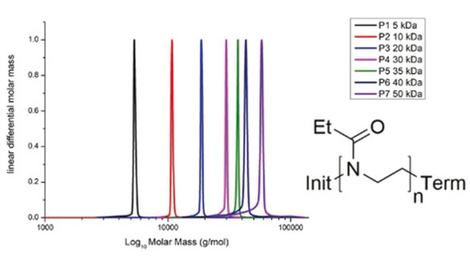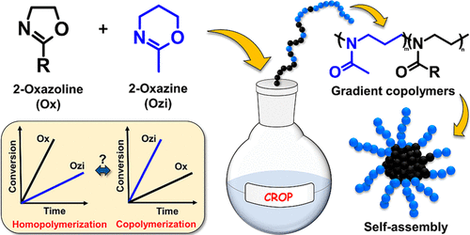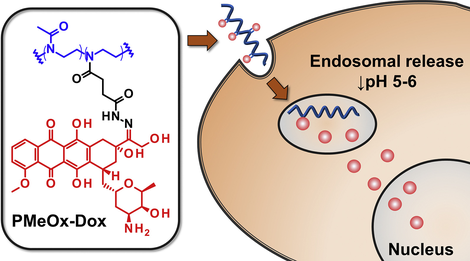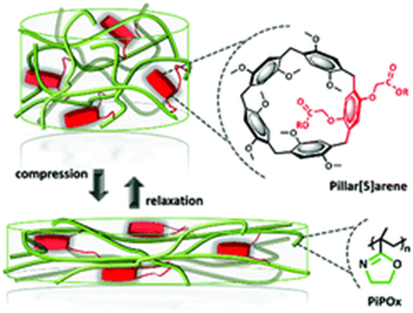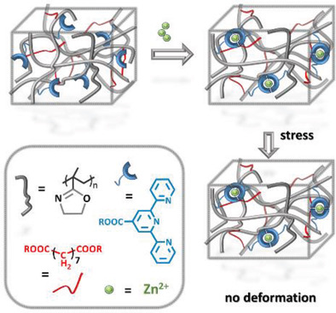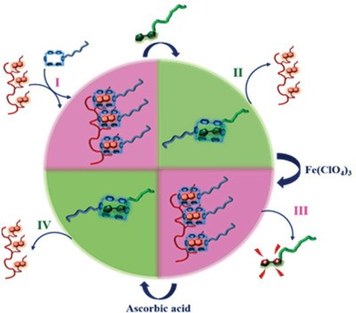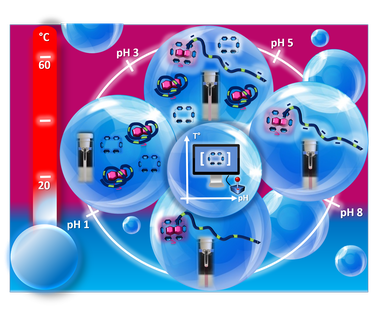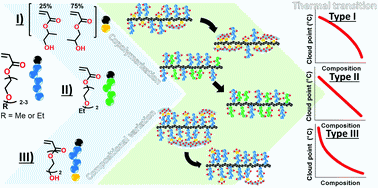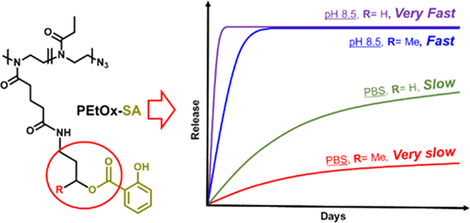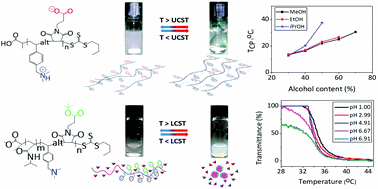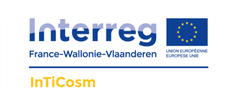Research
Poly(2-oxazoline)s (PAOx)
Description
The living cationic ring-opening polymerization of 2-oxazolines has been studied in great detail since its discovery in 1966. In the new millennium, a revival of PAOx has arisen because of their potential use as biomedical and thermoresponsive materials, as well as the easy access to defined amphiphilic structures for (hierarchical) self-assembly.
Our research group focuses on all aspects of PAOx ranging from new monomer synthesis and development, in dept investigation of (co)polymerization kinetics up to the safety and biodistribution of the resulting PAOx and their use for various, mostly biomedical applications. Specific applications that we develop include the use of PAOx as excipients for oral formulations, tissue adhesives (see www.gatt-tech.com) as well as polymer therapeutics. Finally, we are working towards the commercialization of PAOx under the name Ultroxa® (see www.ultroxa.com).
Recent achievements
- Defined high molar mass poly(2-oxazoline)s (Monnery et al. Angew. Chem. Int. Ed., 2018, 57, 15400)
- The elusive seven-membered cyclic imino ether tetrahydrooxazepine (Verbraeken, Hullaert, et al. J. Am. Chem. Soc.. 2018, 140, 17404)
- Unexpected reactivity switch in the statistical copolymerization of 2-oxazolines and 2-oxazines enabling the one-step synthesis of amphiphilic gradient copolymers (Sedlacek et al. J. Am. Chem. Soc. 2019, 141, 9617)
- Poly(2-methyl-2-oxazoline) conjugates with doxorubicin: From synthesis of high drug loading water soluble constructs to in vitro anti-cancer properties (Sedlacek et al. J. Control. Release, 2020, 326, 53)
Supramolecular materials
Description
Nature exploits a limited number of building blocks in combination with non-covalent and hydrophobic interactions to build complex functional assemblies, such as proteins and cells. In principle, the use of synthetic building blocks allows a higher level of complexity when compared to the limited diversity in nature.
Our research group focuses on the combination of well-defined "smart" polymer structures with supramolecular interactions provided as a platform to develop responsive and functional materials for, e.g., sensors and diagnostics as well as responsive and tough hydrogels. This research covers all aspects ranging from the synthesis and development of novel supramolecular entities, such as host-guest systems and metal coordinating ligands, their incorporation into polymer structures and the evaluation of the resulting supramolecular material properties.
Recent achievements
- High compression strength single network hydrogels with pillar[5]arene junction points (Xu, et al., Mater. Horizons 2019, 10.1039/C9MH01401B)
- Covalent poly(2-isopropenyl-2-oxazoline) hydrogels with ultrahigh mechanical strength and toughness through secondary terpyridine metal-coordination crosslinks (Xu, et al., Adv. Funct. Mater. 2019, 1904886)
- Supramolecular competitive host-guest interaction induced reversible macromolecular metamorphosis (Bera, et al., Macromol. Rapid Commun. 2019, 1900376)
- Dual Responsive Regulation of Host-Guest Complexation in Aqueous Media to Control Partial Release of the Host (Gue, et al., Chemistry - A European Journal 2020, vol:26 iss: 6, 1292)
Responsive polymers
Description
Responsive polymeric materials that undergo a change in properties in response to external triggers are gaining significant interest for the development of smart materials. Especially, polymers that undergo a solution phase transition in response to temperature and/or pH changers are appealing for various applications.
Our research group focuses on the development of novel responsive polymer materials, chromic materials that change color as well as their applications as, e.g. sensors, logic gates and drug delivery vehicles, but also as additives for cement. This research covers the synthesis of novel monomers and chain transfer agents, study on the incorporation of such monomers into a copolymer structure as well as more application directed studies on their properties.
Recent achievements
- Plasma dye coating as straightforward and widely applicable procedure for dye immobilization on polymeric materials (De Smet, et al., Nat. Commun. 2018, 9, 1123)
- Understanding the effect of monomer structure of oligoethylene glycol acrylate copolymers on their thermoresponsive behavior for the development of polymeric sensors (Vancoillie, et al., Polym. Chem. 2019, 10, 5778)
- Poly(2-ethyl-2-oxazoline) Conjugates with Salicylic Acid via Degradable Modular Ester Linkages (Bernhard et al. Biomacromolecules 2020, 21, 8, 3207)
- Dual pH and thermoresponsive alternating polyampholytes in alcohol/water solvent mixtures (Maji, et al., Polym. Chem. 2020, 11, 2205)
Running EU projects
H2020 PoCOsteo
The PoCOsteo-project focuses on developing tools for prevention, detection and treatment of bone deseases such as i.a. osteoporisis (see https://pocosteo.mijnweblayout.be/).
Interreg - InTiCosm
This InTiCosm-project focuses on developing formulation for cosmetics that are based on naturally occuring, biological compounds (see www.interreg-fwvl.eu/sites/default/files/inticosm_nl.pdf).
Valorization
Ultroxa®
Poly(oxazolines) are being commercialized under the tradename Ultroxa® by Avroxa BVBA, a spin-off company from Ghent University (see www.ultroxa.com).
ChemTech
ChemTech is a UGent-based valorization center that serves as an intermediate between UGent-based research groups developing new chemistry and chemical technologies, and industrial collaborators (see www.chemtech.ugent.be).
